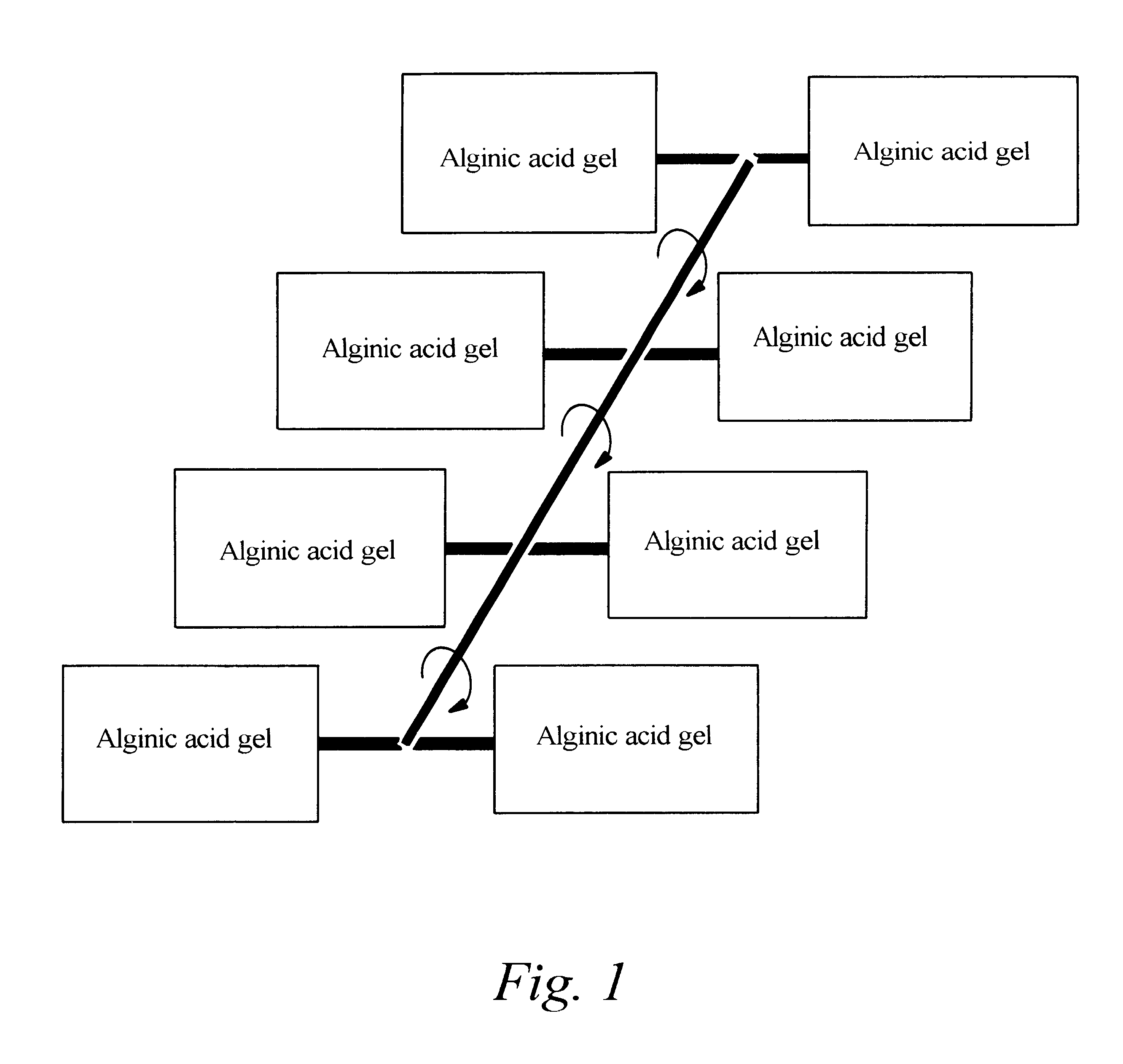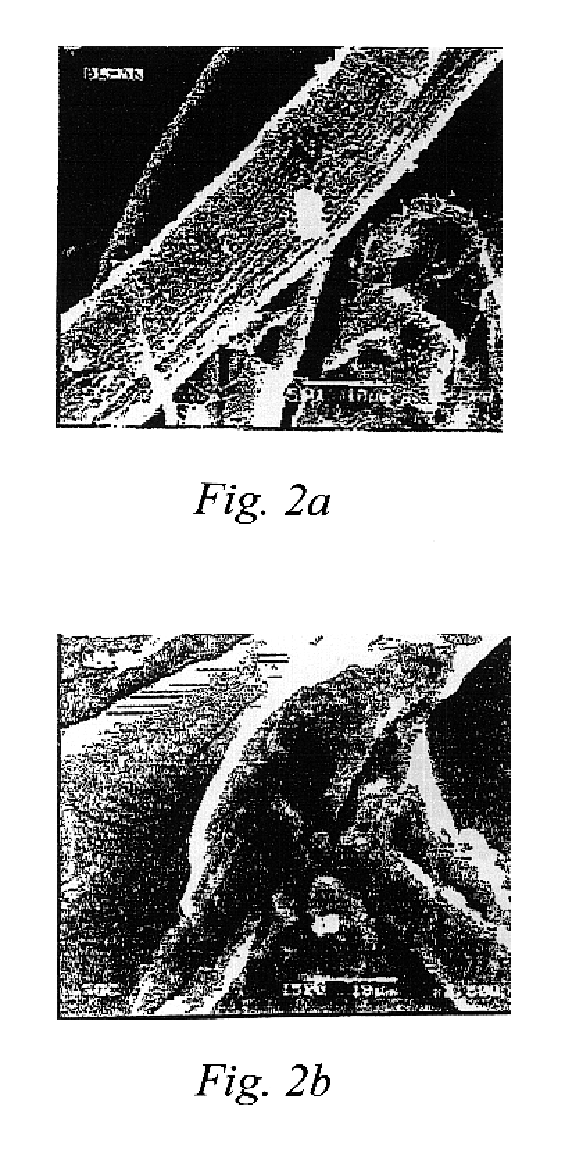Alginate gel based adsorbents for heavy metal removal
- Summary
- Abstract
- Description
- Claims
- Application Information
AI Technical Summary
Benefits of technology
Problems solved by technology
Method used
Image
Examples
examples 1-5
Preparation of a Bead Type Alginate Gel Adsorbent
[0058]1 ml of 1 wt % sodium alginate solution was added to 1 wt % calcium chloride (CaCl2) solution to prepare a bead type alginate gel adsorbent of Example 1 having a diameter of 2.5 to 3.0 mm by an ordinary method.
[0059]A bead type alginate gel adsorbent of Example 2 was prepared in the same manner as described in Example 1 except for using 3 ml of 1 wt % of sodium alginate solution.
[0060]A bead-type alginate gel adsorbent of Example 3 was prepared in the same manner as described in Example 1 except for using 100 ml of 1 wt % of sodium alginate solution. 50 ml of 2 wt % sodium alginate solution was added to 5 wt % calcium chloride (CaCl2) solution to prepare a bead type alginate gel adsorbent of Example 4 having a diameter of 4.2 mm.
[0061]The dried bead type alginate gel adsorbent of Example 5 having a diameter of 1.0 mm was prepared by drying the bead of alginate gel adsorbent prepared by mixing 50 ml of 1 wt % sodium alginate solu...
examples 6-7
Preparation of a Capsule Type Alginate Gel Adsorbent
[0062]A mixed solution of 1 ml containing 1.3 wt % calcium chloride (CaCl2) and 0.26 wt % xanthan gum was added to 0.5 wt % sodium alginate solution to prepare 2 g of a capsule type alginate gel adsorbent of Example 6 having a diameter about 4.0 mm.
[0063]A capsule type alginate gel adsorbent of Example 7 was prepared in the same manner as described in Example 6 except for using 3 ml of a mixed solution of calcium chloride (CaCl2) and xanthan gum.
examples 8-11
Preparation of a Coated Alginate Gel Adsorbent
[0064]A filter paper of a diameter of 55 mm was immersed in the solution of 0.5 wt % sodium alginate to homogeneously absorb 0.75 g of sodium alginate solution, and then immersed in the solution of 1.0 wt % calcium chloride (CaCl2) to form alginate gel onto the surface of the filter paper. A coated alginate gel adsorbent of Example 8 was prepared by drying the above filter paper. FIG. 2(A) is a photograph that is enlarged to 2500 times the surface of the filter paper used in Example 8 and FIG. 2(B) is a photograph that is enlarged to 2500 times surface of the filter paper which was dried after alginate gel was formed with sodium alginate solution onto the surface of the paper in Example 8.
[0065]A paper coated alginate gel adsorbent of Example 9 was prepared in the same manner as described in Example 8 except for absorbing 0.55 g of sodium alginate solution to the filter paper.
[0066]A textile fabric coated alginate gel adsorbent of Exampl...
PUM
| Property | Measurement | Unit |
|---|---|---|
| Volume | aaaaa | aaaaa |
| Fraction | aaaaa | aaaaa |
| Fraction | aaaaa | aaaaa |
Abstract
Description
Claims
Application Information
 Login to View More
Login to View More - R&D
- Intellectual Property
- Life Sciences
- Materials
- Tech Scout
- Unparalleled Data Quality
- Higher Quality Content
- 60% Fewer Hallucinations
Browse by: Latest US Patents, China's latest patents, Technical Efficacy Thesaurus, Application Domain, Technology Topic, Popular Technical Reports.
© 2025 PatSnap. All rights reserved.Legal|Privacy policy|Modern Slavery Act Transparency Statement|Sitemap|About US| Contact US: help@patsnap.com



